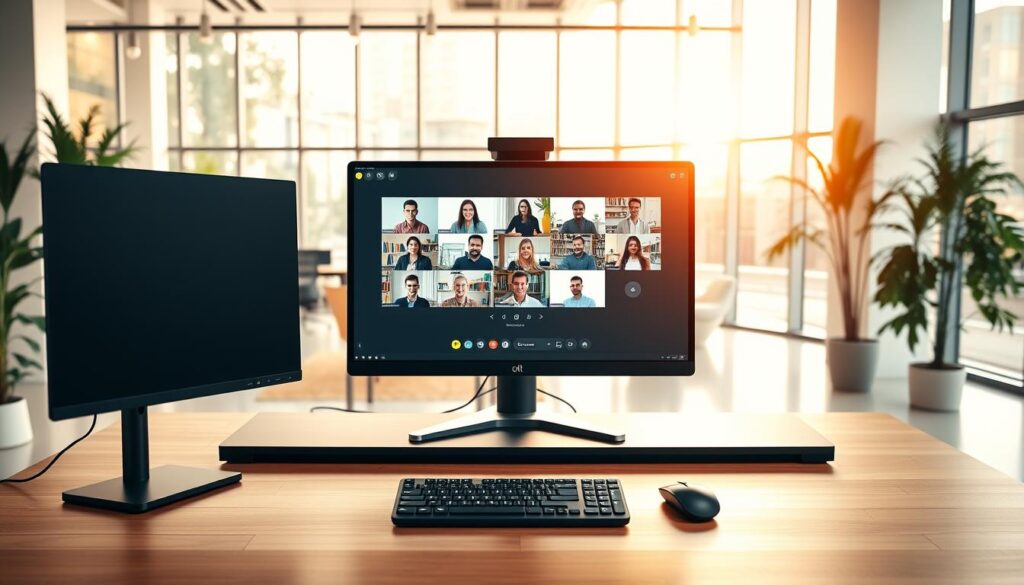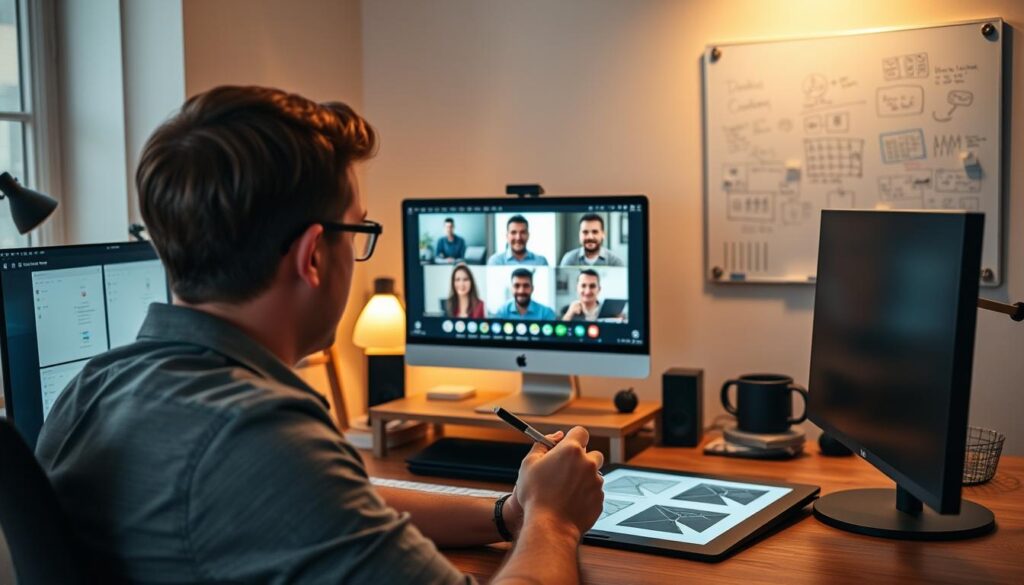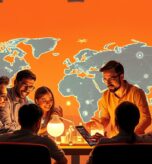Building a creative team requires strategic thinking in today’s fast-paced market. The graphic design industry is booming, with U.S. services projected to hit $11.3 billion by 2025. Yet finding skilled professionals who align with your vision can feel overwhelming.
Specialization matters more than ever. Some creatives excel at brand storytelling, while others thrive in UI/UX or motion graphics. The key lies in matching your project’s unique needs with the right expertise – a process that demands insight into modern hiring channels.
Traditional job posts often miss the mark. With only 3.3% growth expected in design roles through 2032, competition for top talent intensifies. Senior-level strategists now drive innovation while AI handles repetitive tasks, making precise recruitment critical.
We’ve seen businesses succeed by leveraging specialized platforms that connect them with vetted professionals. These solutions streamline collaboration while preserving creative control – turning complex projects into seamless partnerships.
Understanding Remote Graphic Design Staffing
Modern businesses face a critical decision when assembling creative teams: how to balance quality with operational efficiency. Remote staffing offers a strategic path forward, blending specialized expertise with modern workflows.

Benefits of Embracing Remote Talent
Accessing global talent pools transforms how you approach design projects. Skilled professionals from diverse backgrounds bring fresh perspectives, often delivering results that local teams might overlook. Cost savings average 40-60% compared to traditional hiring – funds you can reinvest in marketing or product development.
Collaboration tools like Figma and Slack keep teams aligned across continents. Real-time feedback loops and version control ensure everyone works from the latest files. Scalability becomes effortless – ramp up resources during product launches, then scale back without HR complications.
Challenges and Innovative Solutions
Time zone differences require planning, but they can accelerate progress. A designer in Buenos Aires might refine your logo overnight, while your in-house team sleeps. Clear communication protocols prevent misunderstandings – establish response time expectations upfront.
Platforms like Trello or Asana provide structure for remote work. Weekly video check-ins maintain human connections. For complex projects, consider partnering with specialized staffing firms that pre-vet candidates and handle payroll logistics.
Tree 9’s approach demonstrates how strategic partnerships turn potential obstacles into advantages. Their model prioritizes both cost efficiency and creative excellence, proving distance doesn’t dilute quality when systems align.
Key Considerations When Hiring Remote Graphic Designers
Assembling the right creative partners demands careful evaluation across three critical areas. These factors determine whether collaborations flourish or falter – especially when working across digital distances.

Experience, Expertise, and Portfolio Evaluation
Portfolios reveal capabilities more accurately than resumes. Look for specialists in your niche – whether brand identity systems or interactive prototypes. A motion graphics expert might struggle with print layouts, while UI/UX pros often lack packaging design skills.
Evaluate how candidates solve problems similar to yours. Does their style align with your vision? Can they adapt to your brand guidelines? These insights matter more than years listed on a CV.
Defining Project Scope and Budget
Clear parameters prevent 73% of common collaboration issues. Specify:
- Exact deliverables (logo variants, style guides)
- File formats and resolution requirements
- Revision limits and approval workflows
Budget for total costs – including potential rush fees or stock asset purchases. Fixed-price contracts often outperform hourly rates for defined projects.
Managing Time Zones and Communication
Latin American designers offer 4-6 hours of real-time overlap with U.S. teams. This enables same-day feedback loops rather than 24-hour delays. Test response times during interviews – how quickly do they clarify ambiguities?
Establish preferred tools early: Slack for quick queries, Loom for visual feedback, or Trello for task tracking. Weekly syncs maintain momentum while documented processes keep everyone aligned.
Where to Hire Remote Graphic Designers for Your Creative Project
Choosing the right avenue for your design needs shapes project outcomes. Digital platforms now offer tailored approaches – some focus on quick fixes, others build lasting partnerships. Your decision impacts timelines, budgets, and creative alignment.
Freelance Hubs vs. Specialized Networks
Marketplaces like Upwork work well for defined tasks – logo updates or social media templates. You review proposals, compare rates, and manage contracts. However, vetting multiple candidates eats into project timelines.
Platforms such as Dribbble flip the script. Browse curated portfolios first, then contact creators whose style matches your vision. This approach reduces revision cycles but may cost 20-40% more than general marketplaces.
Streamlining Talent Acquisition
Three factors determine hiring success:
- Platform specialization (project-based vs ongoing support)
- Built-in quality controls (portfolio verification, client reviews)
- Administrative support (payment processing, NDAs)
Subscription services like Design Pickle simplify recurring needs – think weekly blog graphics or email templates. For complex brand systems, consider agencies offering vetted teams. Tree 9 exemplifies this model, connecting companies with pre-screened professionals while handling compliance.
Review each platform’s onboarding process. Some require detailed briefs upfront; others facilitate discovery calls. Match these workflows to your internal resources – overwhelmed teams benefit from managed services.
Top Platforms for Freelance and Subscription-Based Design Services
Selecting the right digital marketplace transforms how you access creative expertise. Modern platforms cater to different workflows – some prioritize flexibility, while others deliver predictable results through structured models.
Freelance Marketplaces Compared
Upwork connects you with professionals across 180+ countries. Choose hourly contracts for ongoing tasks or fixed-price agreements for defined projects. Their Project Catalog simplifies ordering pre-packaged design services like logo creation.
Fiverr’s tiered pricing model offers clarity from the start. Basic packages handle simple edits, while Premium tiers include source files and faster turnarounds. Recent upgrades now support complex brand system development through their Pro marketplace.
99designs stands out for visual projects needing multiple concepts. Launch a contest and receive submissions from global creatives – ideal when exploring different stylistic directions. Best suited for standalone projects rather than ongoing collaborations.
Predictable Support Through Subscriptions
Services like Design Pickle revolutionize recurring needs. For $1,349/month, get daily design hours covering everything from social media templates to presentation decks. This model eliminates per-project negotiations – submit unlimited requests through their portal.
Subscription platforms excel when you need:
- Consistent brand asset production
- Quick turnaround on marketing materials
- Budget predictability without hourly tracking
Evaluate your workflow needs. Freelance platforms like Upwork offer direct creator relationships, while managed services handle quality control and task prioritization behind the scenes.
Recruitment Agencies and Specialized Staffing Solutions
Streamlining your design recruitment strategy unlocks hidden efficiencies. Specialized agencies act as force multipliers, connecting you with professionals who elevate projects while reducing administrative burdens.
Advantages of Partnering with Design Recruiters
Time savings become immediate. Instead of sifting through hundreds of applications, you review pre-screened candidates matching your exact needs. Agencies like Tree 9 deliver qualified graphic designers in 2-3 weeks – three times faster than solo hiring efforts.
Market expertise ensures competitive offers without budget overreach. Recruiters know salary benchmarks across regions and specialties. They align compensation packages to attract top talent while protecting your financial parameters.
Cultural fit assessments prevent costly mismatches. Partners analyze your team dynamics and workflow preferences before presenting candidates. This process results in collaborators who adapt quickly and deliver long-term value.
Global hiring complexities vanish when agencies handle compliance and contracts. They navigate international labor laws, tax regulations, and payment logistics – letting you focus on creative outcomes rather than paperwork.
Tree 9 exemplifies this model, offering replacement guarantees and ongoing support. Their approach helps companies build high-performing teams while conserving resources for core business priorities.
Leveraging Nearshore Talent: Focus on Latin America
Geographic proximity creates untapped advantages in creative partnerships. Latin America emerges as a strategic hub for teams seeking quality and responsiveness – a reality Tree 9 helps clients harness through curated talent networks.
Cost Efficiency Meets Real-Time Collaboration
You gain 40-60% salary savings compared to domestic designers without compromising expertise. The region’s time zone alignment allows same-day revisions – your 2 PM feedback gets implemented by 5 PM. This overlap eliminates the delays common with offshore staffing.
Cultural Synergy Drives Results
Latin American creatives understand U.S. consumer preferences through media exposure and business partnerships. Their English fluency ensures communication flows smoothly, while shared Western cultural references prevent misinterpretations in visual storytelling.
Tree 9’s vetted professionals demonstrate 30% higher retention rates than global averages. They combine technical mastery with talent for adapting brand guidelines – ideal for teams building lasting creative relationships. This model proves hiring remote specialists can elevate outcomes while optimizing budgets.






